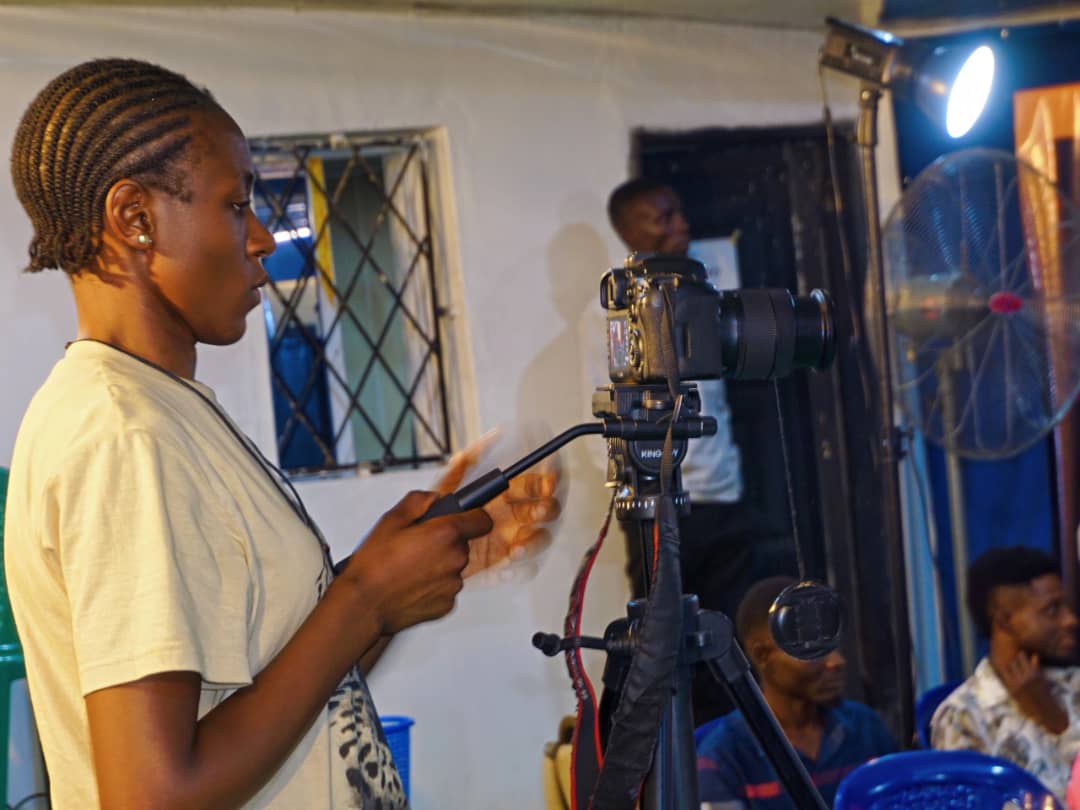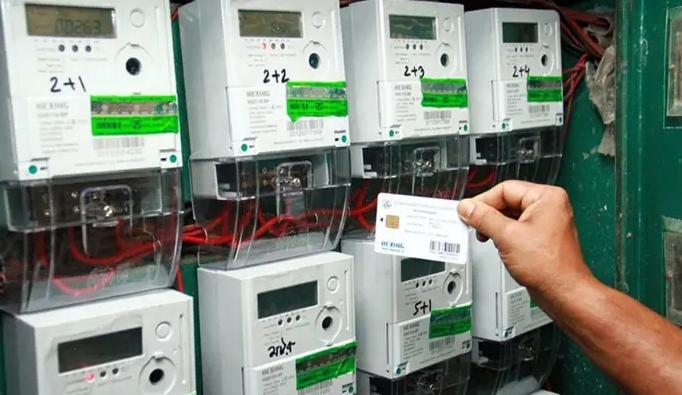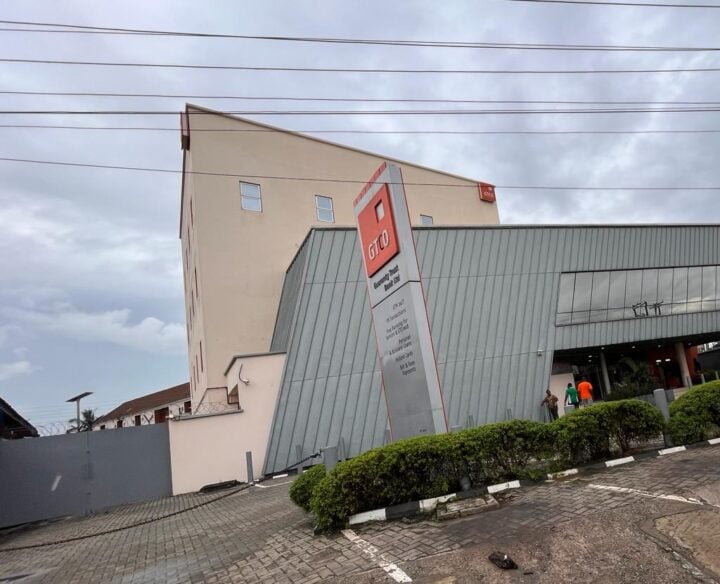BY SHEREEFDEEN AHMAD
As the bride and groom prepared to kiss each other, Temitope Afolayan squatted. When the lovers put their hands on each other’s waists, Afolayan kneeled with a camera glued to her hands as she struggled to capture the glamorous moment of the couple’s kiss.
The next moment, Afolayan’s husband, who was looking after their one-year-old boy, told her that their kid needed attention.
“It has been very challenging for me working as a photographer,” Afolayan, a 37-year-old female photographer and a mother of two, said. “But thanks to my husband, who has been very supportive of me in this profession.”
Advertisement
“Whenever I have an event to cover, he takes me to the venue. When we started having kids, sometimes he looked after them while I continued with the business.”
Despite the pressing challenges facing the 37-year-old photographer, she remains resolute in the male-dominated profession. She established her brand—Lahtemmy Studios in Lagos —covering events, producing skits, and documentaries, among others, across Nigeria.
“Balancing matrimonial activities and office work is one of the greatest challenges I’m facing. Sometimes, I get tired after work. Yet, I still have to fulfill the matrimonial responsibilities expected of me. You have to balance the two; if not, there would be a problem either in your home or at the office.”
Advertisement

Before Afolayan got married, temptation and harassment from men were the problems she had to battle with.
“As a female photographer, everybody would always want to go down with you,” she said.
“When I was not married, I always tried to stay focused, not to mind any intimidation from men. You can easily be derailed if you don’t stay focused. I always know that the camera can take me to places without anybody messing around with me.”
Afolayan is among the few female photographers jostling for space in the male-dominated profession. According to Sam I Am Photography, an international production agency, 85% of photographers globally are male. Among the clientele of top talent agencies, women account for less than 25%.
Advertisement
Afolayan’s journey into the photography profession started in 2011, after graduating from the Lagos State Polytechnic, where she studied business administration.
Shortly after graduation, things started taking a dramatic turn. She began to come into contact with the reality of life. Then, the young Nigerian decided to learn skills that could sustain her, at least, for the meantime while she continued job hunting with her certificate.
She approached the Lagos State Skills Acquisition Centre, but the application for the particular skill she wanted to learn at that time had closed.
“I decided to accept my fate, and I said to myself that I would go back home and wait for another session,” Afolayan said.
Advertisement
On her way out of the school, she saw a photography department with several students clustered around it.
Temitope never knew photography could be studied.“I thought it could only be learned through apprenticeship,” she said.
Advertisement
“I went back to the admin to ask about the details of the course. I was told the form was still available, and that was how I got it. I went back to the instructor in the department. Then, I met about 70 students, but only a few of them were female. I was thrilled.”
When she got back home to inform her parents about her decision to study photography, she was discouraged. But she stood by her decision.
Advertisement
She studied the course for a year. From there, she developed a staunch interest in the photography profession.
“I never knew the profession was widely recognised like that. I found peace and joy in it; even if I’m sick and you give me a camera, I will get better,” she noted.
Advertisement
Despite the challenges that come with being a female in the profession, Temitope never regretted her decision to be a photographer.
“I do other businesses as well, but the main thing I’m into is photography. I have never had the slightest thought of not doing it anymore. The more I want to quit, the sweeter it becomes,” Afolayan stated.
HOW YOUNG FEMALE PHOTOGRAPHERS BATTLE SEXUAL HARASSMENT
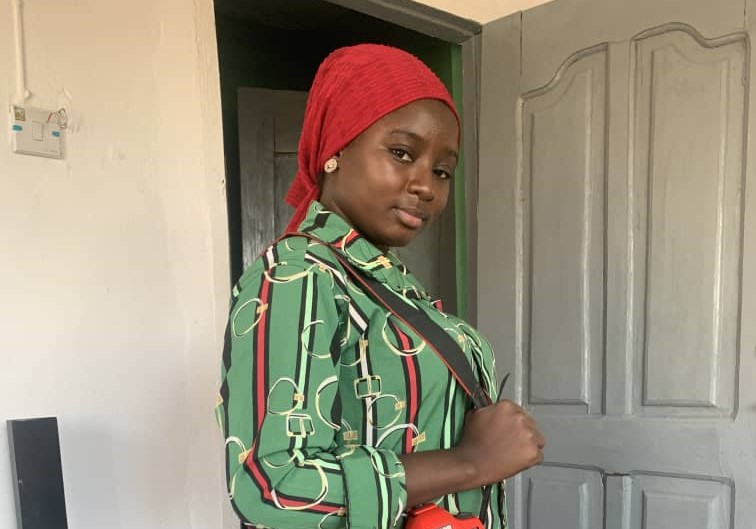
As young ladies strive to carve a spot for themselves in the male-dominated profession, most of them grapple with numerous sexual advances, either from their clients, guests or the people who offer to support their careers.
Mariam Olapade, 25, recalled a day when a guest at an event she was covering tried to grab her buttocks.
“As a Muslim, even though I cover my hair whenever I work, that doesn’t stop men from harassing me,” she said. “There was a time I was shooting at an event, so I had to go low to take the image from a perfect angle because of the type of lens I had. To my surprise, a particular guy was looking at my buttocks and wanted to smash them.”
Olapade had to raise an alarm before the man stopped putting his intentions into practice.
“I had to call the elders on him to resolve the situation,” she said.
“One thing I do mostly to avoid being harassed is that I make sure I don’t walk late at night whenever I go for assignments. I would rather rent a hotel or have a family around for security purposes.”
Aderinsola had her first sexual harassment experience during her early stage in the profession in 2021. A man who offered to support her journey in the profession tried to take advantage of her.
At the time, she was 17 years old and a third-year undergraduate.
“The man was a staff member at the school, and he liked me then. So, I told him about my passion and dream to go into the photography industry. He showed interest in helping me,” Aderinsola said.
One day, he took Aderinsola to about three studios in Lagos, and he committed to paying part of her training fees and other necessary levies.
“Immediately after we came back from the studios, we went to his hostel to talk about the process. However, to my greatest surprise, he tried to sleep with me. But I resisted and ran out of the room,” she said.
Sexual harassment has become prevalent in Nigeria’s tertiary institutions. A 2018 World Bank survey said 70% of female graduates from Nigerian tertiary institutions had been sexually harassed in school by their fellow students and lecturers. A Nigerian study found that 34.2% of the 160 students surveyed said that sexual violence was the most prevalent form of gender-based violence.
Aderinsola’s second experience happened with a man she worked for in Lagos last year. The young female photographer said the man invited her to a hotel.
Thinking that it might be a business meeting, she decided to honour the invitation.
“On getting there, he told me that he had booked a room for us,” she said.
Upon hearing this from the man, Aderinsola’s heart galloped with dread.
“He started saying that he loves me and all of that. A man who is old enough to be my father. Even if he loves me, he could have taken the proper approach instead of taking me to a hotel, booking a room, and harassing me,” she added.
Aderinsola said it was a struggle of the fittest before she made her way out of the hotel room.
According to a report by the Stand to End Rape Initiative (STER) titled Examining the Prevalence, Context, and Impact of Workplace Sexual Harassment in Nigeria, out of 493 participants, 259 (64%) have experienced one or more instances of sexual harassment in their workplace.
The survey said 85 percent of participants who have experienced sexual harassment in the workplace were females, while about 15 percent were males.
The most reported forms of sexual harassment experienced by participants include, but are not limited to, being looked at sexually (45%), receiving unwanted sexual comments/remarks about their clothing/accessories (44%) and receiving non-stop invitations to go out, get dinner, have drinks, or have sex even after declining (27%).
NO LUXURY

Young female photographers like Maram Priscilla do not enjoy the luxury of dresses. To avoid embarrassment or trying to get accurate angles of images, Priscilla is always selective about the clothes she wears.
“It has been very challenging doing photography as a female,” she said. “Dress code remains one of the challenges I face in practising this profession.”
“I could not wear trousers to enter some places like the mosque or some churches. As a lady, being a photographer and wearing a skirt or gown can prove to be disturbing. You would want to take some shots, but the dress would make it uncomfortable.”
Priscilla recalled a moment she described as one of the most embarrassing moments of her life.
“My partner and I went to a church to cover an event in Jos, but we were kicked out of the room because we were wearing trousers and not covering our hair,” she said.
“It was embarrassing because people were looking at us, and we had to leave the church to go get something to cover our heads and find a way to wear something else to continue the job. It was a great embarrassment I never imagined.”
DRIVING PHOTOGRAPHY TOWARDS CHARITY
Influenced by her parents’ ownership of photo studios, Oluwakemi Ezekiel, 29, commenced her journey into the world of photography during the analogue era.
Her inspiration stemmed from witnessing the decline of her parents’ business owing to technological advancements that sprinkled the photography profession with the emergence of new digital tools.
Determined to adapt and thrive in the dynamic of the industry, she embarked on a career as a photo editor at Gonac, followed by a formal photography education at Yaba College of Technology.
“I was initially discouraged by my boyfriend, who was a photographer. He cited the stress and societal perceptions of it being a male-dominated field, yet I decided to pursue photography regardless,” she said.
Ezekiel said some clients expressed skepticism upon meeting her in person after hiring her online because of other beautiful works they had seen.
“Additionally, negotiating fair compensation from clients can be challenging, as some may underestimate my capabilities based on my gender or stature and attempt to pay less for my services,” she said.
Ezekiel’s most fulfilling moment in the profession is thrilling: she organises an event where she captures group pictures of every child or member of orphanage homes and presents them in a large frame alongside donated food items; thanks to contributions from her family and friends.
The initiative, which began in 2022, Ezekiel said, has already reached two orphanage homes, and she aspires to expand it to encompass more homes in Lagos and beyond.
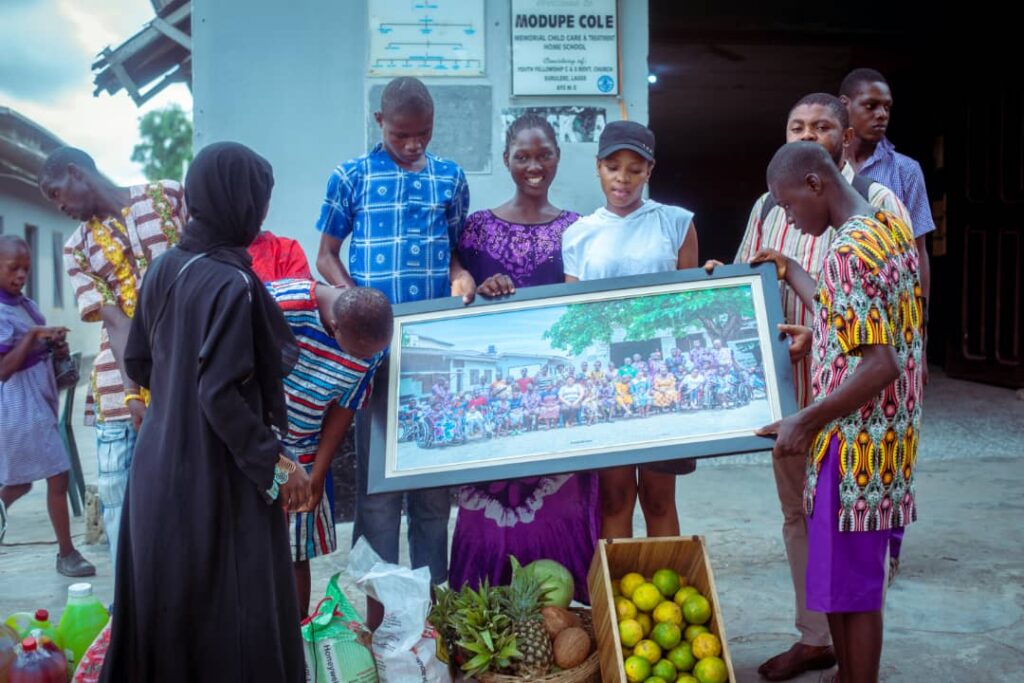
She said the launch of her studio space—Senamimage—coupled with her first solo exhibition, also marked a significant step in her professional journey.
“The bravery that comes with doing what men do is the main reason I’m into photography. Anything men dominated, I always wanted to try and make my way into it. We have female photographers as mentors doing well out there, looking up to them is like motivation already,” Mariam Olapade said.
“And because I want more girls in the creative space, I own a non-profit organization (TIKHORS) that trains teenage girls about visual storytelling. We want more women in the industry.”
Recently, the Confederation of African Football (CAF) lauded the efforts of some young female photographers who carved names for themselves at the just concluded 2023 TotalEnergies CAFCup of Nations in Côte d’Ivoire.
“The TotalEnergies CAF AFCON Côte d’Ivoire 2023 has seen young female photographers getting the opportunity to capture every move of the players, emotions of the fans and goal celebrations,” CAF said in a report published on its official website
“Just as most of the footballers on the turf, these young photographers have had a roller coaster ride to the big stage on the continent.
The young female photographers were Weam Mostafa Elsayed of Egypt, iLa Yeboah of Ghana, Justina Aniefiok of Nigeria, Gambian’s Sarjo Baldeh and Mauritania’s Khady Sy.
Taoheed Adegbite, a gender justice advocate and member of the youth advisory board with the European Union Delegation in Nigeria, believe that there is no profession where both the male and female genders cannot strive.
“I don’t think there’s any profession both genders can’t do and thrive in. The problem lies with us as a society and the insecurity around patriarchy, which has, for a long time, considered women to be a weaker sex, therefore subjugating them to a certain role as petty trading,” she said.
“In fact, in most cases, women in so-called non-traditional roles are labelled recalcitrants or non-Africans. This kind of stereotype is a pushback to many ambitious women who would have made waves in different industries.
“Just like the CFR Women and Foreign Policy Program says in its new digital report that women’s participation in the economy as their male counterpart could grow the country’s GDP by 23 percent by 2025; I see women breaking barriers in photography and other male-dominated roles as a boost for the country.”
Taoheed said those already in all these sectors should continue to draw strength from their motivations and consider their exploits as emancipation for other women.
Add a comment
